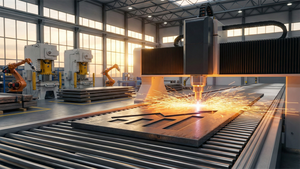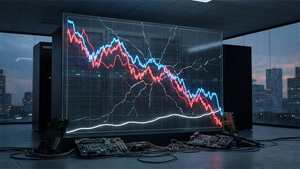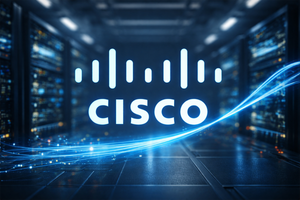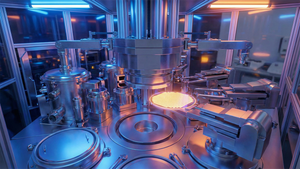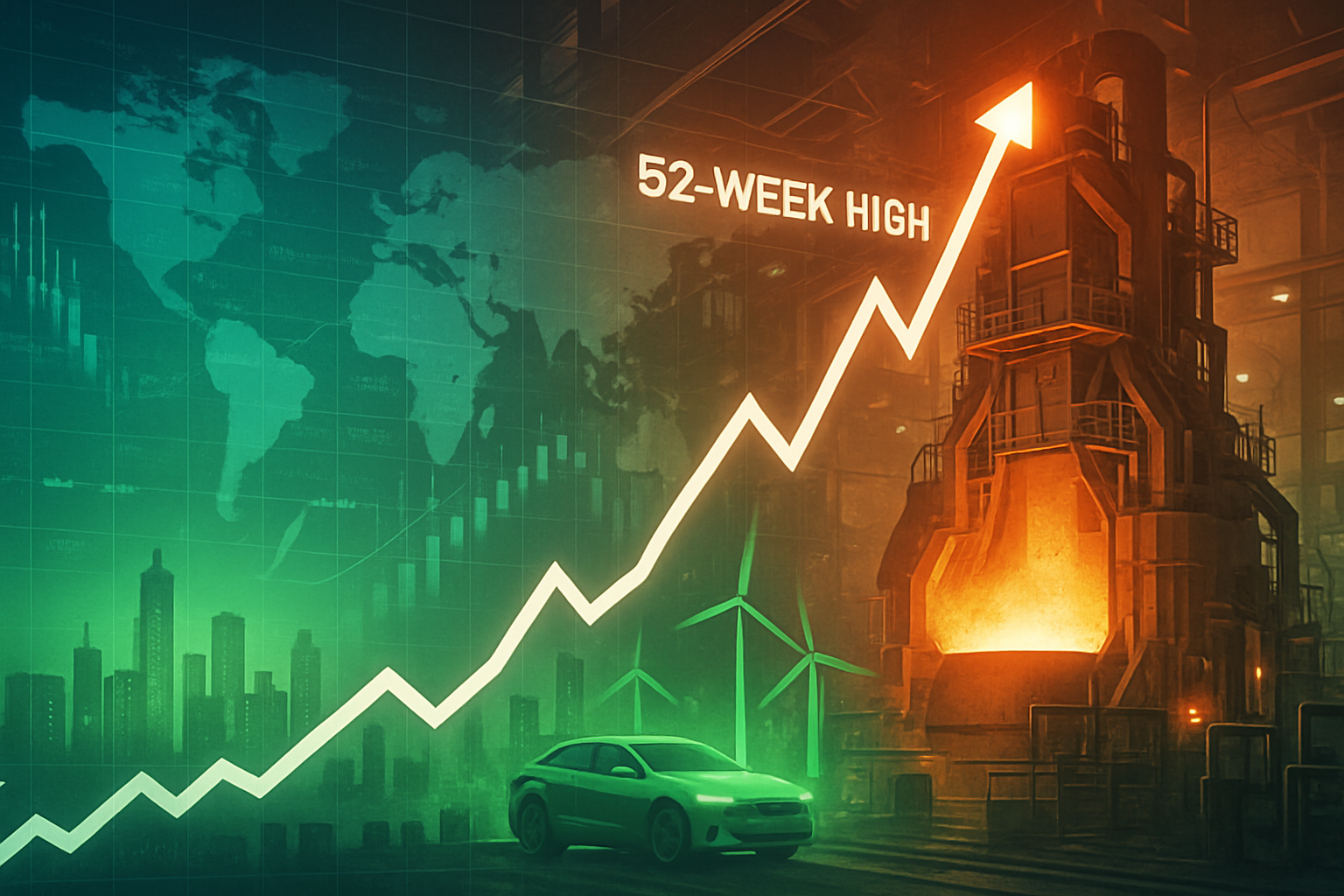
ArcelorMittal SA ADR (NYSE: MT), one of the world's leading steel and mining companies, has achieved a significant milestone, with its stock price hitting a 52-week high of $40.45 USD around October 8, 2025. This surge underscores a period of strong performance for the steel giant, signaling robust investor confidence and a positive outlook for the company amidst evolving global economic dynamics. The achievement highlights the company's strategic resilience and its ability to capitalize on specific market opportunities, even as the broader steel market navigates complex demand patterns.
The impressive stock performance reflects a confluence of favorable factors, including a rebound in key industrial sectors, strategic geographical positioning, and proactive corporate initiatives. This upward trajectory suggests that ArcelorMittal is effectively leveraging its operational strengths and market intelligence to maintain profitability and growth, positioning itself as a bellwether for the health of the global steel industry. Investors are clearly reacting positively to the company's financial health and its strategic moves to navigate trade policies and sustainability demands.
ArcelorMittal's Ascent: A Deep Dive into the Factors Behind the Peak
The specific event of ArcelorMittal's stock reaching $40.45 USD around October 8, 2025, marks a pivotal moment for the company and the steel sector. This 52-week high is not an isolated incident but the culmination of several strategic and economic forces. A primary driver has been the sustained, albeit regionally varied, demand for steel. While some forecasts indicated a modest recovery in EU apparent steel consumption for 2025, robust infrastructure projects in emerging economies, particularly in Asia and Africa, have provided significant tailwinds. Furthermore, key sectors like automotive manufacturing and construction, especially in the U.S. benefiting from the Infrastructure Law, have demonstrated strong demand signals, bolstering steel consumption.
ArcelorMittal's (NYSE: MT) proactive corporate strategies have been instrumental in its financial health and stock performance. The company has maintained a "GOOD" financial health score, according to InvestingPro analysis, consistently delivering strong earnings. For instance, Q2 2025 saw earnings per share (EPS) of $1.32, comfortably surpassing analyst expectations of $1.05, with revenues reaching $15.93 billion against a forecast of $15.44 billion. This consistent outperformance, coupled with significant increases in net income, even amidst geopolitical challenges, has instilled considerable investor confidence.
The steel giant has also strategically repositioned itself to navigate complex global trade dynamics. This includes capitalizing on protective trade policies, such as the 12% year-over-year increase in steel prices in Q1 2025 driven by tariffs and domestic support policies in the U.S. and EU. A notable example is the 2024 investment of $500 million to relocate a production facility from Asia to Texas, a move designed to bypass U.S. tariffs and secure direct access to the lucrative North American market. Furthermore, ArcelorMittal's "Smart Carbon" initiative, targeting a 30% reduction in carbon emissions by 2030, aligns with evolving regulatory frameworks like the EU's Carbon Border Adjustment Mechanism, positioning the company favorably in a sustainability-conscious market. These strategic maneuvers, combined with active portfolio management and digitalization efforts, have collectively fueled the stock's impressive climb.
Initial market reactions have been largely positive, reflecting an underlying optimism, albeit cautious, about the future business prospects in the steel sector. Investor confidence has been high, with the stock's upward trend signaling positive market sentiment. Even as it hit its 52-week high, InvestingPro indicated that ArcelorMittal was trading at an attractive P/E ratio of 12.5x and potentially below its Fair Value, making it an appealing prospect for investors. While analyst opinions were mixed around early October 2025, with several "Hold" ratings, a significant number maintained "Buy" ratings, and some firms had recently upgraded the stock, reinforcing the positive sentiment surrounding the company's trajectory.
Winners and Losers: The Ripple Effect of ArcelorMittal's Surge
ArcelorMittal's (NYSE: MT) robust performance and the upward trend in steel prices, particularly around October 8, 2025, create a complex web of winners and losers across the industrial landscape. As the world's second-largest steelmaker, its fortunes invariably impact its competitors, its raw material suppliers, and its vast customer base.
Competitors: A Mixed Bag of Opportunity and Challenge
For other major steel producers, ArcelorMittal's strong showing generally signals a healthy market with robust demand and favorable pricing conditions. Companies like Nippon Steel Corporation (TSE: 5401), POSCO Holdings (KRX: 005490), Tata Steel (NSE: TATASTEEL), and particularly North American players like U.S. Steel (NYSE: X) and Nucor Corporation (NYSE: NUE), are likely to benefit from the broader positive sentiment and higher steel prices. This allows them to also command better prices for their products, potentially boosting their revenues and profitability. However, ArcelorMittal's strategic growth initiatives, including expanding capacity and focusing on high-added-value products, could intensify competition for market share, especially in specialized steel segments like automotive, potentially pressuring smaller or less efficient rivals.
Suppliers: Iron Ore Miners Strike Gold
ArcelorMittal, while increasingly self-sufficient in iron ore, still relies on external suppliers for a significant portion of its raw material needs. The company's strong performance, driven by robust steel demand, directly translates to increased demand for iron ore. This scenario is highly beneficial for major iron ore mining companies such as Vale S.A. (NYSE: VALE), Rio Tinto (ASX: RIO, LSE: RIO), BHP Group (ASX: BHP, NYSE: BHP), and Fortescue Metals Group (ASX: FMG). Rising steel prices often correlate with stronger iron ore prices, leading to improved revenues and profitability for these miners. Long-term supply contracts with ArcelorMittal would likely see sustained demand and potentially favorable pricing, especially if contracts include market-linked clauses.
Customers: Feeling the Pinch of Higher Costs
Conversely, major consumers of steel face increased cost pressures. The automotive industry, where ArcelorMittal is the #1 supplier globally, will feel a significant impact. Automakers like General Motors (NYSE: GM), Stellantis (NYSE: STLA), Ford Motor Company (NYSE: F), Toyota Motor Corporation (NYSE: TM), and Honda Motor Co., Ltd. (NYSE: HMC) will see their production costs rise, as steel constitutes a substantial portion of vehicle manufacturing expenses. This could squeeze profit margins or force them to pass on costs to consumers through higher vehicle prices, potentially dampening sales. Similarly, the construction industry, a massive consumer of steel for buildings, bridges, and infrastructure, will face higher material costs, leading to potential project cost overruns, reduced contractor margins, and even project delays or cancellations. Both sectors may intensify their exploration of alternative, lighter materials to mitigate reliance on increasingly expensive steel.
Wider Significance: Navigating a Shifting Global Steel Landscape
ArcelorMittal's (NYSE: MT) achievement of a 52-week high around October 8, 2025, is more than just a company milestone; it's a significant indicator within a global steel industry undergoing profound transformations. This strong performance, showing a 56.66% increase over the past year, stands out against a backdrop of persistent challenges and evolving trends, particularly global overcapacity and the urgent push towards decarbonization.
Broader Industry Trends: Resilience Amidst Headwinds
While ArcelorMittal thrives, the broader steel market in late 2025 continues to grapple with fundamental issues. Global overcapacity remains a significant concern, with projections indicating a surplus of 721 million metric tons by 2027. Crude steel production for 2025 is generally forecast to be down, reflecting weakening market fundamentals driven by uncertainties in trade policies and environmental regulations. China's substantial overcapacity continues to exert downward pressure on global prices and trade flows. Regionally, the European steel market, for instance, faces declining apparent steel consumption in 2025, with a modest recovery not anticipated until 2026, still below pre-pandemic levels. However, ArcelorMittal's success suggests that strategic positioning and operational efficiency can enable outperformance even in a challenging environment, potentially by focusing on high-demand segments or regions and leveraging cost advantages.
Ripple Effects on Competitors and Partners
ArcelorMittal's strong performance has immediate ripple effects. Other major European steel producers, such as SSAB (STO: SSAB-A), Thyssenkrupp (ETR: TKA), Voestalpine (VIE: VOE), and Salzgitter (ETR: SZG), also saw their shares climb around October 8, 2025, following the announcement of new EU protectionist measures. This indicates that regional competitors can also benefit from policies that shield them from cheaper imports, creating a more level playing field. However, smaller or financially weaker players may face increasing credit risk and liquidity issues due to squeezed margins from overcapacity and intense competition. Conversely, partners and customers, particularly in the automotive and construction sectors, face potential inflationary pressures. The European Automobile Manufacturers' Association (ACEA) has already warned about the impacts of increased steel tariffs, leading to declines in the shares of major carmakers on October 8, 2025, as higher input costs threaten to dampen their recovery.
Regulatory and Policy Implications: A New Era of Protectionism and Green Mandates
Governments worldwide are increasingly intervening to shape the steel industry's future. There's a clear global shift towards "managed trade," with the EU's steel protection package, announced on October 7, 2025, being a prime example. This package includes a nearly 50% reduction in import quotas and an increase in tariffs from 25% to 50% on volumes exceeding these quotas. This aggressive stance, mirroring earlier U.S. tariffs (raised to 50% in June 2025), aims to protect domestic industries from global overcapacity and unfair trade practices. These measures, including a "melt and pour" rule, could lead to international trade disputes but are designed to bolster regional steelmakers.
Simultaneously, decarbonization policies are fundamentally reshaping the industry. The steel sector, responsible for approximately 10% of global emissions, faces immense pressure to transition to greener production methods. Policies like the EU's Carbon Border Adjustment Mechanism (CBAM) are designed to level the playing field for domestic green steel producers by imposing costs on carbon-intensive imports. Governments are supporting the development of clean power, hydrogen infrastructure, and R&D for green steel, creating both challenges and opportunities across the supply chain as the "green premium" for low-carbon steel is expected to rise. ArcelorMittal's "Smart Carbon" initiative and its reported 20% carbon emission reduction over the past two years position it favorably in this evolving regulatory landscape.
Historical Precedents: Cyclicality and Strategic Adaptation
Historically, the steel sector is known for its cyclical nature, heavily influenced by economic downturns, demand fluctuations, and trade disputes. Periods of robust demand or significant trade protection, much like the current scenario, have often led to improved financial performance for major steel players. The current wave of protectionist measures (e.g., U.S. Section 232 tariffs, EU safeguard measures) is a recurring theme, echoing past instances where countries imposed tariffs and quotas to shield their domestic industries from surges in imports and global oversupply. ArcelorMittal's ability to thrive in this environment underscores the importance of strategic adaptation, technological advancement (including automation, digital transformation, and green steel technologies), and active portfolio management to navigate the industry's inherent volatility.
What Comes Next: Navigating the Future of Steel
ArcelorMittal's (NYSE: MT) ascent to a 52-week high around October 8, 2025, positions the company at a critical juncture, reflecting both its current strengths and the dynamic future of the global steel industry. The path forward for the steel giant and the broader market will be shaped by a complex interplay of decarbonization imperatives, evolving trade policies, and shifting global demand patterns.
Short-Term Possibilities (2025-2026): Managing Volatility and Strategic Execution
In the immediate future, ArcelorMittal is expected to continue navigating a somewhat volatile landscape. While some analysts project continued bullish sentiment, the company itself has acknowledged challenges, recently cutting its steel demand forecast and raising its estimate for the financial impact of U.S. tariffs, which could reduce core profit by $150 million in 2025. This highlights the ongoing influence of trade policies and regional demand fluctuations. However, ArcelorMittal is actively executing its decarbonization strategy, with projects like the €1.7 billion initiative in France for Electric Arc Furnaces (EAFs) and Direct Reduced Iron (DRI) units, and the construction of a 1.1 million tonne EAF in Gijón, Spain, aiming for significant CO2 reductions. The broader steel market may see stabilization in some markets but will face new pressures from increased global demand and supply constraints, particularly in emerging markets like India and Southeast Asia, while demand in China is projected to decline. Geopolitical events and trade policies will remain significant disruptors.
Long-Term Possibilities (2027-2030 and Beyond): Leading the Green Steel Revolution
The long-term outlook for ArcelorMittal is intrinsically linked to its ability to lead the transition to green steel. The company aims for a 35% reduction in CO2 emissions in Europe and 25% globally by 2030, with carbon neutrality by 2050. This will involve the large-scale adoption of hydrogen-based DRI and Carbon Capture, Utilization, and Storage (CCUS) technologies, anticipated to make a meaningful difference after 2030. The global green steel market is projected for rapid growth, potentially reaching over $89 billion by 2032, making it a dominant force. ArcelorMittal's continued investment in R&D for breakthrough low-emissions steelmaking, digitalization, and innovation for electric vehicles (EVs) and advanced construction solutions will be crucial. The global steel market itself is projected for steady growth, potentially reaching USD 1.92 trillion by 2030, driven by infrastructure, urbanization, and manufacturing, with a strong emphasis on sustainable and eco-friendly steel.
Strategic Pivots and Adaptations: A Path to Sustainable Leadership
To maintain its leadership, ArcelorMittal will need to make several strategic pivots. Firstly, an accelerated and globally consistent decarbonization strategy is paramount, requiring aggressive investment in green steel technologies and addressing challenges like high capital costs and the viability of green hydrogen. The company faces scrutiny regarding a "two-speed decarbonization strategy" and must ensure a robust climate approach across all geographies. Secondly, adaptation to trade policies and localization will involve deepening its manufacturing presence in key markets to mitigate tariffs and secure market share, potentially through further acquisitions or local investments. Thirdly, optimizing supply chains for resilience against geopolitical disruptions and continuously innovating its product portfolio—especially for high-strength, lightweight steels for EVs and specialized steels for renewable energy infrastructure—will be vital. Finally, ArcelorMittal must actively engage with customers and governments to create a clearer value proposition for low-carbon steel, overcoming the current limited willingness of customers to pay green premiums.
Market Opportunities and Challenges
Significant opportunities lie in the surging demand for green steel, driven by environmental regulations and corporate sustainability goals. Continued global investments in infrastructure, urbanization, and the electrification of the automotive sector will provide a solid foundation for steel demand. Technological advancements in AI, automation, and advanced sensors offer pathways for enhanced efficiency and cost savings. However, challenges persist, including geopolitical volatility, which can lead to supply chain disruptions and price volatility, and the persistent global overcapacity, particularly from China, which continues to depress prices. The high capital and operating costs of decarbonization, coupled with energy and raw material price fluctuations, pose substantial financial hurdles. Regulatory uncertainty and competition from alternative materials also remain critical factors to monitor.
Potential Scenarios and Outcomes
Three broad scenarios could unfold:
- Optimistic "Green Transformation": ArcelorMittal successfully pivots to become a leading green steel producer, achieving decarbonization targets with strong policy support and increasing customer demand for low-carbon products. This would solidify its market leadership and enhance profitability.
- Challenging "Fragmented and Cost-Pressured": Geopolitical tensions escalate, leading to increased trade barriers and market fragmentation. Overcapacity persists, and decarbonization efforts face headwinds from high costs and insufficient customer demand for green premiums, squeezing profitability across the industry.
- Moderate "Adapt and Innovate": ArcelorMittal continues its decarbonization efforts, albeit at a measured pace, leveraging a mix of technologies and gradual hydrogen integration. The steel market experiences moderate growth, with green steel gaining traction in niche markets. The company maintains its position through diversified operations and continuous efficiency improvements, though achieving ambitious decarbonization targets might require more significant external shifts.
ArcelorMittal's ability to navigate these opportunities and challenges through strategic adaptation, particularly in accelerating its global decarbonization efforts and adeptly responding to trade policies, will define its trajectory and impact the broader steel market in the coming years.
Wrap-Up: A Resilient Giant Forging Ahead
ArcelorMittal's (NYSE: MT) stock hitting a 52-week high around October 8, 2025, is a testament to the steel giant's resilience, strategic foresight, and operational excellence in a complex global market. The key takeaways from this event highlight the company's successful navigation of challenging economic currents, its strategic embrace of decarbonization, and its ability to capitalize on regional demand strength and protective trade policies. While the broader steel industry grapples with overcapacity and regional demand disparities, ArcelorMittal has demonstrated its capacity to outperform, driven by robust earnings, a strong balance sheet, and a proactive approach to global trade dynamics.
Moving forward, the market for steel will increasingly be defined by two dominant forces: the imperative for decarbonization and evolving global trade dynamics. ArcelorMittal's significant investments in green steel technologies and its commitment to reducing carbon emissions position it favorably for the long term, as environmental regulations tighten and customer demand for sustainable products grows. However, the high costs associated with this transition, coupled with persistent global overcapacity and the potential for renewed protectionist trade measures, will present ongoing challenges.
The lasting impact of this event underscores that even in mature, cyclical industries like steel, strategic innovation and adaptability are paramount. ArcelorMittal's proactive approach to sustainability, its shrewd navigation of international trade, and its focus on high-value segments have allowed it to not only weather storms but also achieve significant growth. This performance serves as a blueprint for other industrial players seeking to thrive amidst global economic shifts and environmental mandates.
Investors should closely watch several key indicators in the coming months. Firstly, monitor ArcelorMittal's progress on its decarbonization initiatives, particularly the deployment of hydrogen-based DRI and EAF technologies, and how these impact its cost structure and product differentiation. Secondly, pay attention to global trade policy developments, especially any shifts in tariffs or import quotas in major markets like the U.S. and EU, as these will directly affect profitability and market access. Thirdly, keep an eye on raw material and energy prices, as these are critical input costs for steel production. Finally, observe demand trends in key sectors such as automotive (especially EV production) and infrastructure development, which will continue to be primary drivers of steel consumption. ArcelorMittal's journey will offer valuable insights into how established industrial giants can transform and prosper in an increasingly green and interconnected world.
This content is intended for informational purposes only and is not financial advice.

